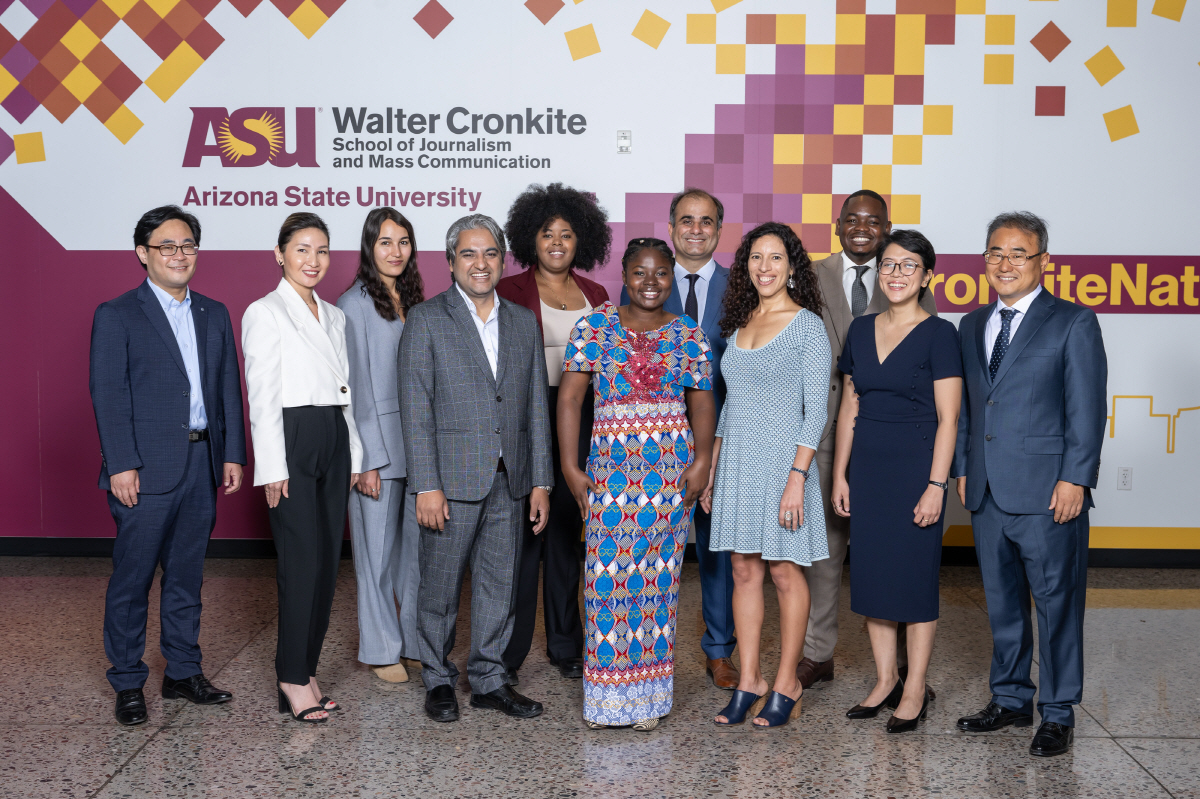We met with two famous senior American Journalists, Aaron Brown, the inaugural Walter Cronkite Professor of Journalism, the former lead anchor for CNN, Leonard Downie Jr, Weil Family Professor of Journalism, Professor of Practice M.A, a vice president-at-large of The Washington Post, at the Humphrey seminar. During the meeting, they talked about American journalism history and future.
Ok, what is the future of the journalism?
The Internet has brought significant changes in the world. The pace of technology’s changes in our lives is becoming faster and faster. If you can gather any information freely and quickly by using the Internet, then why you should pay for printing and broadcasting media outlets?
Therefore, media outlets have been facing major challenges. I am glad to hear that Public radio in America is getting more powerful than other media outlets, because Mongolian Public Radio has been losing its audiences especially in the capital. According to the new survey on online economics
“Web developments have already impacted the wider universe of news greatly. But they have yet to be made available inside cars, where most audio listening occurs. If developed, this now-captive audience would have a much wider universe of listening options…
…Terrestrial broadcast radio continues to serve the greatest number of overall listeners. Fully 236 million Americans listened to at least some radio in an average week in the fall of 2009, a number that has been basically static for the past five years.1
This dominance, though, is based on an old advertiser-supported model that is showing serious cracks, especially if trends that are accelerating in other sectors hit radio in a way they haven’t yet.
While ventures such as pure-play Internet radio, or audio available only through the Internet, have yet to significantly hurt terrestrial radio, other technologies are already eating away at the time people spend listening to traditional broadcasts. The number of people who say they listen to less terrestrial radio as the result of their use of an iPod/MP3 player has increased from 37% in 2008 to 42% in 2009.2 A parallel pattern is evident with online radio. In an Arbitron survey, 27% of respondents said they listened to online radio in the previous month (about 69 million people), which is up from 21% in 2008. While these numbers are still small, they do show a steadily increasing number of people seeking audio service from other technologies.3
People like the control and variety that newer technologies offer, according to polls. And though it is not yet available, already a third of Americans say they would like online radio in their cars.
Indeed, though predicted only a few years ago, other competing audio systems now seem to pose less of a threat to terrestrial broadcasters than had been expected…”


I think future of journalism cant measure as it moving so fast. But in the long run it will create “Cultural Lag”. Do you know what i mean.
Sociologist William F. Ogburn in his 1922 work Social change with respect to culture and original nature.[2] His theory of cultural lag suggests that a period of maladjustment occurs when the non-material culture is struggling to adapt to new material conditions.[3] This resonates with ideas of technological determinism, in that it presupposes that technology has independent effects on society at large.
According to Ogburn, cultural lag is a common societal phenomenon due to the tendency of material culture to evolve and change rapidly and voluminously while non-material culture tends to resist change and remain fixed for a far longer period of time.[4] Due to the opposing nature of these two aspects of culture, adaptation of new technology becomes rather difficult. This distinction between material and non-material culture is also a contribution of Ogburn’s 1922 work on social change.[2]
Cultural lag creates problems for a society in a multitude of ways. The issue of cultural lag tends to permeate any discussion in which the implementation of some new technology is a topic. For example, the advent of stem cell research has given rise to many new, potentially beneficial medical technologies; however these new technologies have also raised serious ethical questions about the use of stem cells in medicine. Cultural lag is seen as a critical ethical issue because failure to develop broad social consensus on appropriate applications of modern technology may lead to breakdowns in social solidarity and the rise of social conflict.[5]
References
1. ^ Woodard, James W. “Critical Notes on the Culture Lag Concept.” Social Forces 12.3 (Mar. 1934): 388-398. SocINDEX with Full Text. EBSCO. Langsdale Library, Baltimore, MD. 30 Sep. 2009.
2. ^ a b Ogburn, William F. Social change: With respect to cultural and original nature. Oxford England: Delta Books, 1966. PsycINFO. EBSCO. Langsdale Library, Baltimore, MD. 30 Sep. 2009.
3. ^ Schaefer, Richard T. Sociology: A Brief Introduction 8th Edition. New York: McGraw-Hill, 2009. Print.
4. ^ Ogburn, William F. “Cultural Lag as Theory.” Sociology & Social Research 41.3 (Jan. 1957): 167-174. SocINDEX with Full Text. EBSCO. Langsdale Library, Baltimore, MD. 30 Sep. 2009.
5. ^ Marshall, Kimball P. “Has Technology Introduced New Ethical Problems?.” Journal of Business Ethics 19.1 (n.d.): 81-90. SocINDEX with Full Text. EBSCO. Langsdale Library, Baltimore, MD. 30 Sep. 2009.
Alauddin